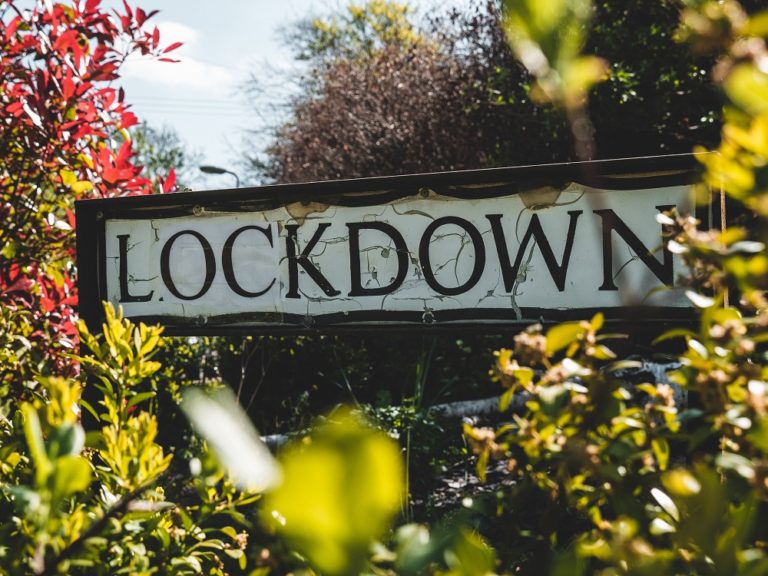How the 2021 Budget will affect you
This week, the Chancellor Rishi Sunak unveiled his much anticipated budget, outlining government spending and tax policies for the coming year.
You can read the whole thing online here – though fair warning, it is 110 pages long.
Or perhaps more useful, an outline of what’s going into the Finance Bill from 11 March 2021.
You’ll have seen the highlights throughout the week so for this analysis I’ll be diving into the policies that will affect consumers directly.
BTW, there’s a handy calculator from accountancy firm Blick Rothenberg that will help you work out roughly whether you’ll be better or worse off under the new budget.
Key points in the budget
Furlough scheme extended to 30 September 2021
Furloughed employees will continue to receive 80% of their salary, up to £2,500 – this is then taxed as normal.
Employers will only pay for employer National Insurance contributions and pension contributions until the end of June, with the bulk of the money received by employees covered by the government.
From 1 July 2021, employers will pay for employer National Insurance contributions and pension contributions as well as 10% of their employees’ salaries up to £312.50 – the government will then top this up to 80%.
For August and September, they will pay for employer National Insurance contributions and pension contributions as well as 20% of their employees’ salaries up to £625 – the government will again top this up to 80%.
The scheme will theoretically end after that and it’s not clear whether the previously touted Job Support Scheme will be introduced or if that’s been scrapped altogether.
Tip: It’s worth remembering that your holidays must be paid at your full salary rate rather than the furlough rate and you continue to accrue annual leave while on furlough.
Depending on your circumstances, it might be worth taking a holiday while on furlough rather than waiting until you return.
A round of redundancies might still happen after furlough ends so make sure you know your rights.
SEISS will end after a fifth grant
The fourth Self-Employment Income Support Scheme (SEISS) grant will be 80% of three months’ average trading profits, capped at £7,500.
This one will take into account the 2019 to 2020 tax return.
You have to fit certain criteria as before, including being able to prove that you’ve had a reduction in income due to Covid. The eligibility checklist can be found here.
Applications won’t be possible until late April, and you’ll have to claim by 31 May 2021.
You can apply for the fifth and final SEISS grant in late July, and the government will announce more details closer to the time.
The amount will be determined by how much your turnover has been reduced in the year April 2020 to April 2021.
You’ll get 80% of three months’ average trading profits up to £7,500 if your turnover was down by 30% or more, or 30% of three months’ average trading profits up to £2,850 if your turnover was down by less than 30%.
Tip: If you were previously excluded from claiming SEISS, don’t assume you will again.
As the fourth and fifth grants will take tax returns for 2019/2020 into account, those who were previously ineligible to claim may now be able to do so, especially if they’re newly self-employed.
More support for those on lower incomes
The government confirmed that the temporary uplift of £20 per week that’s applied to Universal Credit (UC) will be extended by another six months.
Those receiving Working Tax Credit (WTC) will receive a one-off payment of £500. And even if you’re currently on furlough, the government will continue to assume you are working your normal hours when calculating WTC.
For those who are self-employed, the surplus earnings de minimis will remain £2,500 until April 2022 – there were plans to drop this sum to £300, which means more people would see their UC allowance taper off at lower incomes.
There’s also a delay to the Minimum Income Floor (what the government thinks you’ll earn, and what they use to calculate your UC allowance) being reintroduced until the end of July 2021.
Tip: You might be able to get your Minimum Income Floor reduced or removed altogether if your business continues to be affected by the pandemic – speak to your work coach. Without one, you might be able to get a higher UC allowance.
From April 2021, the government will claim back UC advances from your UC allowance over a 24 month period rather than 12 months. The deduction will also reduce from a cap of 30% to 25% of the standard allowance.
Effectively you’ll be able to keep more of your UC allowance than before if you applied for an advance before your first UC payment came in.
The government has also allocated £3.8 million of funding for a no-interest loans pilot scheme for vulnerable borrowers but there isn’t information on how it will work yet.
Finally, care leavers up to the age of 25 and those under the age of 25 who have spent at least three months in a homeless hostel will be exempt from the Shared Accommodation Rate (the rate used to calculate what people are entitled to under the housing element of UC).
This exemption has been brought forward from October 2023 to June 2021.
Tip: Diarise the date if you’re eligible – the exemption means you’ll be able to get more money each week under UC and potentially get into better housing.
Stamp Duty Land Tax freeze extended
Buyers won’t have to pay Stamp Duty Land Tax (SDLT) on properties of up to £500,000 until 30 June 2021 in another U-turn by the government.
After that and until 30 September 2021, there’s no stamp duty to pay on properties of up to £250,000.
Then from 1 October 2021, the threshold will return to £125,000.
Tip: The stamp duty holiday has already had an inflationary effect on property prices. Now that it’s been extended until the end of September, property prices will continue to be bolstered by this.
It may well be that, post-vaccine, the economy will recover at lightning speed and property prices continue their upward trajectory. But if not, make sure you’re prepared for potential short to medium term losses in property value.
New temporary mortgage guarantee
The government will introduce a mortgage guarantee for new applications made between April 2021 to December 2022.
It’s designed to encourage lenders to offer 95% Loan To Value (LTV) mortgages for homes of up to £600,000 with the government footing some of the bill should the borrower default on their repayment.
Obviously the borrower still needs to pass the usual creditworthiness checks, but in theory it means more people could get on the housing ladder.
Tip: It’s worth bearing in mind that while a high LTV mortgage might help you get on the housing ladder with a smaller deposit, they generally come with much higher interest rates. It means you may end up repaying more money overall.

Fuel and alcohol duty frozen
Fuel duty and alcohol duty have both been frozen for a year. However, Vehicle Excise Duty for cars, vans and motorcycles will be increasing in line with RPI from 1 April 2021.
VAT drop extended
VAT for businesses in the hospitality, accommodation and attractions industries will remain 5% until 30 September 2021.
It will then rise to 12.5% until 31 March 2022. What happens next will fall under budget 2022, presumably.
Tip: When the VAT cut was introduced last year, some businesses said that they would not be passing on the difference to consumers. So while it might be a small bump in earnings for businesses, consumers are unlikely to have seen the benefits of this one.
However, when the VAT rises in October, you can almost certainly expect prices to increase.
Personal allowance and higher rate threshold frozen
Personal allowance and higher rate threshold will both increase from April 2021, but will then be frozen until April 2026.
Personal allowance will become £12,570 while the higher rate threshold will rise to £50,270.
The upper and lower profit limits of National Insurance Contributions will also be frozen after April until 2026.
Tip: Whether salaries will enjoy an annual rise in line with inflation will depend on the company you work for but there are a couple of things you can do to maximise your tax allowance if you fall into the higher earning bracket.
If you’re married or in a civil partnership, you can transfer £1,250 of your personal allowance to your husband, wife or partner – assuming they earn less than the personal allowance threshold.
And of course you should maximise your ISA allowance each year.
You can also pay more money into your pension – you’ll benefit from the tax relief and save towards your future. Unless your pension portfolio is already enormous…
Pensions Lifetime Allowance frozen
Pensions Lifetime Allowance has been frozen at £1,073,100 until April 2026. It means if your portfolio is bigger than this, you will be subject to taxes when you come to withdraw your money.
Tip: You don’t pay tax on your pension until you come to withdraw it and it’s over the lifetime allowance. Depending on your circumstances, it might be worth delaying withdrawing your pension.
You’ll also pay less tax if you don’t withdraw it as a lump sum.
Inheritance tax nil-rate band and residence nil-rate band frozen
Inheritance tax nil-rate band and residence nil-rate band will be frozen at £325,000 and £175,000 respectively.
Those receiving an inheritance of more than the combined £500,000 will be subject to a 40% tax on anything over the threshold.
Tip: For those thinking about estate planning, it’s worth knowing that you can give away up to £3,000 a year without it counting towards the tax-free sum.
And slightly harder to plan – you can give gifts of any value as long as it’s done at least seven years before your death.
If you have a particularly large estate, it’s worth talking to a specialist about how to maximise your tax allowances, especially between spouses/civil partners. This is particularly important if your portfolio includes investments that may also be subject to Capital Gains Tax at a later date.

Contactless payment limit raised
Later this year (date TBC), the contactless payment limit will be raised to £100 from £45. There will also be a cumulative total of £300 before you have to put in your pin.
Tip: Obviously this more than doubles the existing contactless payment limit, which makes it quite tempting for thieves so it may be worth investing in a good RFID blocker such as this*.
Air Passenger Duty (APD) is increasing
APD rates for reduced and standard short-haul flights will remain frozen but long haul rates will increase in line with RPI from April.
The actual amount for each journey is quite small – £2 in economy; £5 in premium economy, business and first class; and £13 by private yet – but of course it will be passed on to passengers.
The context for Budget 2021
If you’ve been following news coverage, and indeed have read every issue of Money Talk, you’ll of course know that pubic finances is currently in dire straits.
The three lockdowns have caused the UK’s economy to contract and the short periods of easing in between didn’t allow it to get anywhere near back to normal.
Some sectors, especially retail, bounced back faster than expected although hospitality and travel have been languishing.
Overall, it means while things aren’t as bad as experts first expected, or indeed as bad as they could be, they’re not great either.
All of this affects things like tax receipts for the government (its income) as well as the number of jobs available.
Part of what’s been holding the UK economy together has been the government support offered so far, in particular the furlough scheme, which has kept so many people effectively employed.
The flip side is of course that, in a time when the government isn’t getting as much money in through tax, it’s having to spend a lot of money to support jobs and the economy – hence the record levels of borrowing last year.
Now, the government is hoping to redress this imbalance by cutting costs and increasing income.
It’s worth bearing in mind that the pandemic is still ongoing, and the budget is based on economists’ projections using data from the last year (factoring different restrictions during the three lockdowns and varying tiers) rather than reality, which means that by the time it’s reviewed again later this year, things may need to change again.






